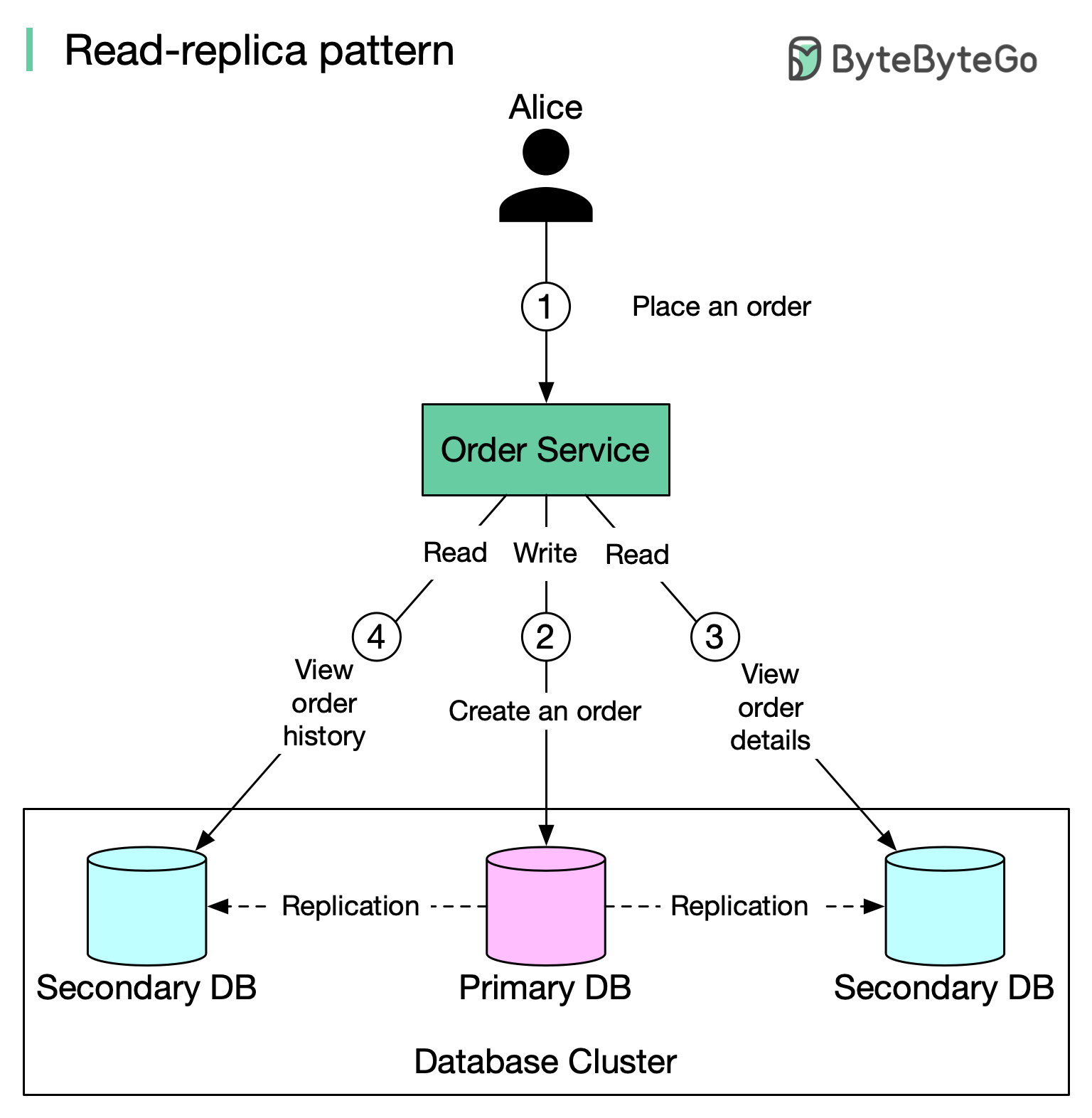Explore the read replica pattern for database design and optimization.

In this post, we talk about a simple yet commonly used database design pattern (setup): Read replica pattern.
In this setup, all data-modifying commands like insert, delete, or update are sent to the primary DB and reads are sent to read replicas.
The diagram above illustrates the setup:
There is one major problem in this setup: replication lag.
Under certain circumstances (network delay, server overload, etc.), data in replicas might be seconds or even minutes behind. In this case, if Alice immediately checks the order status (query is served by the replica) after the order is placed, she might not see the order at all. This leaves Alice confused. In this case, we need “read-after-write” consistency.
Latency sensitive reads are sent to the primary database.
Reads that immediately follow writes are routed to the primary database.
A relational DB generally provides a way to check if a replica is caught up with the primary. If data is up to date, query the replica. Otherwise fail the read request or read from the primary.